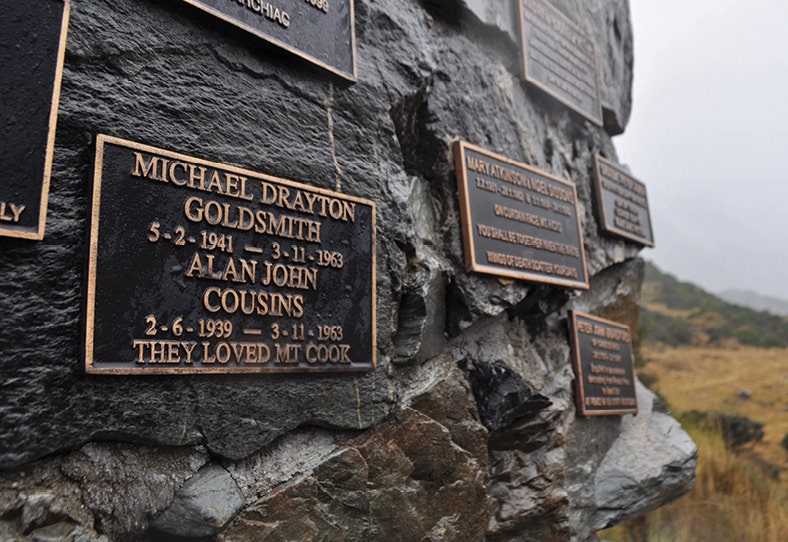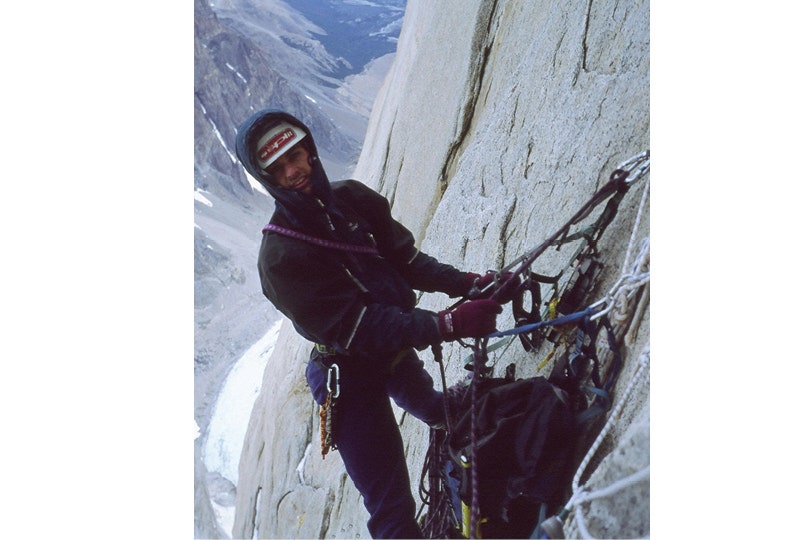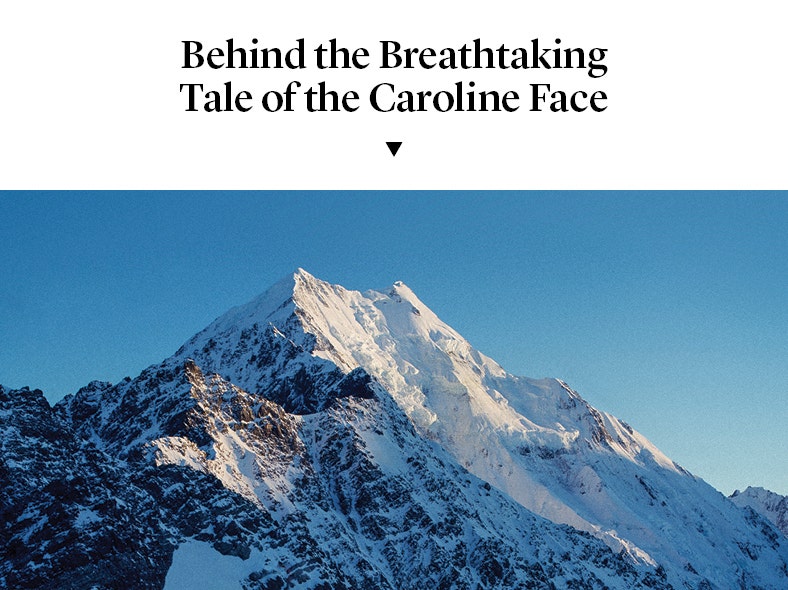In 1999, in National Park, two climbers, Mike Brown and Kent Needham, came across the bodies of two other climbers missing since 1963. The location of the bodies of Michael Goldsmith and Alan Cousins suggested that the missing climbers may have attempted to scale the 2000m high Caroline Face, Aoraki’s most treacherous slope.
Beside the bodies, they also found a camera with an undeveloped roll of film that promised to finally resolve a long-running mystery: who was the first to scale the Caroline Face?
It’s an adventure story, a ghost story and a true story, reported by award-winning journalist Charles Anderson in the new issue of 1972 magazine, which arrives in Barkers stores this week. Taking great pains not to drop any spoilers, we talked to Anderson about this extraordinary tale of danger in the pursuit of everlasting glory.
1972: You wrote that the chief ranger at the time described Cousins and Goldsmith’s attempt on the Caroline Face as “suicidal”. But is danger the drawcard for mountaineers?
CA: I guess part of it is the idea that the more difficult the journey, the more satisfying the destination. The Caroline Face had had several attempts in the past and was referred to as the ‘last problem’ in NZ mountaineering, an obvious climb that hadn’t been done -- and those were getting fewer and fewer in this era of mountaineering. If you were ambitious and young, as these two were, you’d want to put your name on something.

1972: They wanted to climb this mountain face so bad, you suggest they snuck past the rangers?
CA: They left a note. So, they said they were going, but they did it in a way that meant they wouldn’t have to face any confrontation. One of the documents I found was a debrief by the Park Board. It was pretty explicit that if they’d had a face to face meeting or told them they were planning on climbing it, they would have been discouraged.
1972. Are mountaineers heroes or are they actually very silly to take such risks?
CA: You could make the same argument about Sir Edmund Hillary. If certain great events had been failures, you might categorise them completely differently.
If you’re a mountaineer, you’re devoted to taking calculated risks. I don’t think anyone who gets into it is foolhardy, because you just can’t be. There are too many external factors that would be your downfall. In saying that, there are things beyond your control which can happen, and very likely happened to these two.
1972: You describe a later, successful climb of the Caroline Face, where two mountaineers delicately pick their way along an ice shelf and it’s like climbing along a roof, with sheer drops on either side, and a crowd gathered back at the Hermitage, trying to watch these tiny figures through binoculars. That image made me see humans as being very fragile and insignificant compared to this massive, indifferent mountain. It’s the opposite of heroic.
CA: The feeling I got was that you do submit yourself to the mercy of nature when you’re out there in this precarious environment. There’s no escaping the elements when you’re teetering on the edge of the face so high up, so there’s a balance between submitting to nature and also wanting to conquer one small part of it.

1972: Do you think people seek out danger because modern life is too safe and boring?
CA: I think there’s an element of that. If you want to experience the world, you have to experience nature, and if you want to experience nature, you have to go to its most extreme point. How else do you truly begin to understand what it is to be a human on earth?
Mike Brown, who found the bodies in 1999, suggested that he wanted to get away from modern life, to feel like he was connected to humanity and the past, rather than just put on a suit and go to work, when we are capable of so much more. How do you do that in 2016 or 1999? You do that by putting yourself at risk, where modern conveniences no longer offer the safety that they do in cities across the world. It’s more difficult to do that nowadays because you’re so connected, but regardless, if you put yourself on a mountain face thousands of metres up in the sky, those things become less and less important.
1972: Did you find this story personally inspiring?
CA: As a non climber, I wasn’t able to get close up to visualize what they were trying to achieve, and I wasn’t about to go up there and try it myself, but I read enough mountaineering literature to appreciate that this was a huge task.
To devote yourself to something like that, I find it impressive. You have to have an element of calculated risk to do anything magnificent. If we took that out of every attempt on anything, I doubt there would be much to champion the human pursuit of excellence.
1972 Magazine Winter 2016 in Barkers Stores Now
Twitter: @cdlanderson

